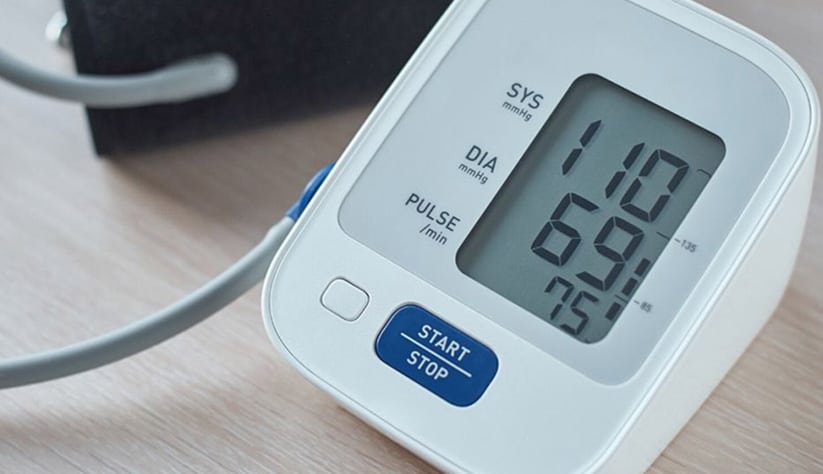
What is Gestational Diabetes?
Gestational diabetes mellitus is a condition that is discovered during pregnancy, which is caused by insulin resistance, and can cause pregnancy-related complications in the baby including elevated blood glucose levels, excess birth weight, underdeveloped lungs, stillbirth, postpartum hypoglycemia, and maternal pre-eclampsia (high blood pressure).
For many pregnant women, gestational diabetes is temporary, treatable, results in a healthy pregnancy and a healthy baby, and resolves after child birth.
However, there are many women unaware that they are living with insulin resistance, prediabetes, or type 2 diabetes prior to pregnancy who then develop gestational diabetes during pregnancy.
Oftentimes, pregnancy is the first time many women are comprehensively tested for metabolic conditions like diabetes, high blood pressure (hypertension), high cholesterol, and obesity.
In this article, we’ll discuss the connection between gestational diabetes and insulin resistance, and explain key strategies that can dramatically prevent and reverse it altogether.
What Causes Gestational Diabetes?
Similar to prediabetes and type 2 diabetes, gestational diabetes most often results from uncontrolled insulin resistance.
It’s important to understand that pregnant women develop insulin resistance as a natural byproduct of being pregnant, however the diet that a woman eats during pregnancy is also incredibly important.
How You’ll Typically Find Out
Laboratory testing typically done at around 24 weeks can become an important time to learn about underlying conditions that may be developing in the mother which increase the risk for pregnancy-related complications.
Between 24-28 weeks, pregnant women are asked to take an oral glucose tolerance test (OGTT). The OGTT is standard care for pregnant women in their late 2nd or early 3rd trimester to screen for gestational diabetes.
During an OGTT, you’ll typically fast for 8 to 12 hours before arriving at a medical clinic. Then, you’ll drink a solution containing glucose and provide blood samples to a medical technician according to a timed schedule.
Once the results of your OGTT are analyzed, you’ll be notified of whether you’re safe, whether you should go for follow up testing, or whether your results indicate that you have gestational diabetes.
Unfortunately, there is no consensus on how to analyze an OGTT, and as a result, diagnosing gestational diabetes varies from institution to institution.
The amount of glucose in the solution, the timing of blood samples, and the threshold for high blood glucose differ between institutions, making it extremely challenging to come to a research-based consensus.
Organization | Duration | Glucose Challenge | Interpretation of Results |
|---|---|---|---|
1 hour (fasting) | 75 grams of glucose | Fasting: BG < 95 mg/dL | |
3 hour (fasting) | 100 grams of glucose | Fasting: BG < 95 mg/dL | |
2 hour (fasting) | 75 grams of glucose | Fasting: BG <126 mg/dL | |
1 hour (fasting) | 50 grams of glucose | Fasting: BG < 95 mg/dL | |
3 hour (fasting) | 100 grams of glucose | Fasting: BG < 105 mg/dL | |
2 hour (fasting) | 75 grams of glucose | Fasting: BG < 95 mg/dL | |
2 hour (fasting) | 75 grams of glucose | Fasting: BG < 92 mg/dL | |
2 hour (non-fasting) | 75 grams of glucose | 2 hours: BG < 140 mg/dL | |
3 hour (fasting) | 100 grams of glucose | Fasting: BG < 95 mg/dL | |
2 hour (fasting) | 75 grams of glucose | Fasting: BG < 100 mg/dL | |
2 hour (fasting) | undetermined | Fasting: BG < 92 mg/dL | |
2 hour (fasting) | 75 grams of glucose | Fasting: BG < 92 mg/dL | |
Perform a 1 hour (fasting) OGTT first, then proceed to a 3 hour (fasting) OGTT if they fail | 1 hour fasting OGTT: 50 grams of glucose | 1 hour: BG < 130-140 mg/dL |
The IADPSG “one-step strategy” has been adopted internationally, but conflicting recommendations by multiple expert groups make it challenging to determine objective criteria for the diagnosis of gestational diabetes.
Despite this difference in diagnosis criteria, our diet and treatment recommendations are an extremely powerful way to improve the health of both mom and baby, and are specifically designed to reverse insulin resistance and reduce the risk of complications during and after pregnancy.
How Common is Gestational Diabetes?

Since 2006, the prevalence of gestational diabetes has doubled and is now diagnosed in 10% of all pregnancies.
That means that 1 out of every 10 pregnancies in the past 10 years has resulted in gestational diabetes, making it one of the most common complications of pregnancy.
There are a few factors that may have led to this increase in the prevalence of gestational diabetes. In the past twenty years, obesity has continued to rise in the United States, and being overweight is a strong risk factor for developing gestational diabetes.
Note: As you can see in our insulin resistance checklist, not being at your ideal weight is one of the biomarkers for insulin resistance, which can increase your risk for all forms of diabetes.
For many women who are diagnosed with gestational diabetes, it’s the first time they ever hear about high blood glucose, diabetes, or insulin resistance. However, many women are living with insulin resistance prior to becoming pregnant.
One of the best ways to avoid gestational diabetes altogether is by reversing insulin resistance prior to conception.
Let’s dive more into insulin resistance in order to learn it’s connection to gestational diabetes.

Insulin Resistance and Gestational Diabetes
Simply put, insulin resistance results from the accumulation of excess fat in tissues that are not designed to store large quantities of fat, and it is the underlying condition that increases your risk for complications in all forms of diabetes.
If you have been diagnosed with gestational diabetes, this indicates that you were likely either insulin resistant prior to pregnancy, or developed insulin resistance during pregnancy.
This can result from the many risk factors above, it can result from shifts in hormones, or you could already be living with insulin resistance and not even know it.
So the key to preventing, treating, and reversing gestational diabetes is really focused on reversing insulin resistance – the root cause of blood glucose variability and elevated blood glucose values.
Because insulin resistance results from the accumulation of excess fat in tissues like muscle, liver, adipose, the key to reversing insulin resistance is to reduce your dietary fat intake.
Dietary fat is the key contributor to developing insulin resistance. As you reduce excess dietary fat and burn through the stored fat in your cells and tissues, you can reverse insulin resistance and improve your glucose tolerance.

Does Gestational Diabetes Go Away?
Most doctors aren’t comfortable using the word “reverse” when it comes to gestational diabetes because it’s considered a temporary form of diabetes that resolves after delivery.
However, if you develop gestational diabetes during pregnancy, scientific research indicates that you have a 35-60% increased risk of developing type 2 diabetes within 10 to 20 years after pregnancy.
Multiple studies have found similar results, which indicate that it’s important to treat gestational diabetes as a potential warning sign and respond accordingly.
Fortunately, making smart changes to your diet can not only help reverse insulin resistance, but also help improve you and your baby’s overall health.
How Does Gestational Diabetes Affect the Baby?

When you are diagnosed with gestational diabetes, the primary concern is to ensure a healthy pregnancy for you and your baby, which means managing your blood glucose with precision.
Glucose in maternal blood passes through the placenta and into the baby’s bloodstream. Maternal insulin, however, doesn't cross the placenta.
This happens because glucose is a small molecule that is small enough to pass through the placenta, but maternal insulin is a much larger molecule that cannot pass through.
Your baby will begin producing its own insulin at 12 weeks gestation.
When the fetus is exposed to excess glucose from the mother’s blood, the baby secretes its own excess insulin in utero, greatly increasing the risk for complications for both mom and baby.
What this means is that your baby’s glucose level will likely remain stable throughout pregnancy even though your blood glucose may be elevated.
Some Possible Effects of Gestational Diabetes
Insulin affects your baby’s entire body. It acts as a glucose transporter but is also a potent growth factor that stimulates the growth of all tissues and can increase your baby’s body weight.
Babies who are producing large amounts of insulin to keep their blood glucose stable in the womb have a risk of growing at an accelerated rate.
This can cause your baby to gain excess weight, which can cause complications during delivery, including requiring a Cesarean birth.
Additional insulin exposure for your baby also increases the risk for underdeveloped fetal lung tissue, which causes respiratory distress after birth, often requiring immediate respiratory support.
Another common problem for a newborn producing excess insulin in utero occurs when the umbilical cord is cut.
When your baby has high levels of endogenous (self-made) insulin, they can become hypoglycemic within 1-48 hours after birth when the umbilical cord is cut and the baby is no longer exposed to excess glucose from maternal blood.
Both of these problems can be treated, often through care in the newborn intensive care unit (NICU) by administration of intravenous glucose, which adds stress to what can already be a stressful and complicated time.
It’s also worth noting that GDM does increase the chance of stillbirth by 34%, up to 17.1 per 10,000 deliveries as compared with 12.7 per 10,000 deliveries for women without diabetes.
Other Effects of Gestational Diabetes
Aside from many of the effects that come with any form of insulin resistance (unpredictable energy, weight fluctuations, excessive hunger, urination, or thirst), gestational diabetes can also result in a condition called pre-eclampsia.
Pre-eclampsia is characterized by high blood pressure and can result in liver and kidneys damage, which may prompt an emergency Cesarean birth, decreased blood supply to your baby, and premature delivery.
Note: If you have had pre-eclampsia in a previous pregnancy, you are at an increased risk for GDM.
Fortunately, almost all of the effects of GDM can be counteracted by monitoring your blood glucose levels, and adopting a lifestyle guaranteed to keep your blood glucose in range in the long-term.
How to Manage Gestational Diabetes: Action Plan
The first step to effectively managing gestational diabetes starts with monitoring your blood glucose (blood sugar) and regularly taking insulin when needed to help supplement your body’s insulin production.
Remaining physically active during pregnancy can certainly help keep your blood glucose well controlled.
A recent systematic review and meta-analysis analyzed data from more than 5,000 pregnant women and found that 30-60 minutes of aerobic exercise 2-7 times per week during pregnancy can dramatically reduce the risk of pre-eclampsia and cesarean delivery.
This includes activities like walking, swimming, or riding a stationary bike to low-impact aerobics, yoga and pilates, and even modified strength training.
Another study analyzing more than 273,000 pregnant women found that exercise during pregnancy dramatically reduces the risk of developing gestational diabetes, gestational hypertension, and pre-eclampsia.
Despite this, research indicates that the most powerful way to minimize insulin resistance and ensure a healthy pregnancy and baby is by eating a diet specifically designed to maximize your insulin sensitivity.
Whether planning for pregnancy, managing gestational diabetes, or improving your health postpartum, a low-fat, plant-based, whole-food diet can have long-lasting results.
Below, we go into our recommended diet guidelines for managing gestational diabetes and reversing insulin resistance.
We’ve also created guidelines for what to eat by trimester so that you can understand how to change your diet as your pregnancy progresses.
Gestational Diabetes Diet: What to Eat

No matter what type of diabetes you may be living with, the path to reversing insulin resistance is clear: a low-fat, plant-based, whole-food diet.
Not only can the Mastering Diabetes Method reduce the severity of gestational diabetes (or prevent or reverse it altogether) the benefits extend beyond simply managing your blood glucose (read our article on fighting PCOS for more information).
By eating a variety of whole plant foods, you’ll offer tissues in your body and your baby’s body a high exposure to bioavailable nutrients, which have been shown to reduce inflammation, reduce blood pressure, reverse heart disease, and stabilize blood glucose.
Green Light Foods
Feel free to eat as much of these “green light” foods as you like:
Fruits for breakfast and lunch (3-5 servings per meal)
Whole grains (1-2 cups per day)
Legumes (1-2 cups per day)
Leafy green vegetables
Herbs and spices
Yellow Light Foods
Yellow light foods tend to be higher in calories and/or fat. They are plant-based foods, but can cause more blood glucose variability or contribute to increased insulin resistance and glucose intolerance.
If you do consume yellow light foods, notice the impact on your blood glucose, as these foods can cause more glucose elevations, especially in your fasting blood glucose values.
Here’s a list of yellow light foods to eat in small quantities:
High-carbohydrate, reduced-fiber foods
High-fat plant foods
Minimally processed plant foods
Red Light Foods
Red light foods can have a wide variety of negative effects on your body during pregnancy. We recommend minimizing and avoiding these foods altogether.
In the best case scenario, red light foods simply worsen insulin resistance and increase your body weight.
In the worst case scenario, red light foods like alcoholic beverages can dramatically increase the risk for pregnancy-related complications.
Here’s a list of red light foods to minimize or avoid entirely:
Processed and refined foods
Sugar-sweetened beverages
Dairy products
Red meat, white meat, eggs and fish
Refined oils
Note: We know that pregnancy can be a difficult time, so don’t be too hard on yourself if you can’t adhere to these deadlines perfectly.
Following these guidelines is the evidence-based, research-backed method to combat gestational diabetes and ensure you and your baby remain healthy throughout pregnancy and delivery.
Sample Gestational Diabetes Meal Plan

You can find recommended meal plans (for both during and after pregnancy), plant-based recipes to blow you away, and nutritional guidelines to reverse insulin resistance all here at Mastering Diabetes.org.
As we mentioned above, the method is actually very simple: low-fat, plant-based, whole-foods.
However, we’ve also included a guide with some pro-tips on what you can eat throughout each trimester below.
What Should I Eat Throughout the Trimesters?
Each trimester will bring along different experiences for you, and you may start to feel different symptoms each week. Don’t worry, that’s very normal.
Here are some suggestions to help you navigate the changes in your body throughout the trimesters and beyond.
1st Trimester
Carbohydrate rich foods can help with nausea, as they “settle the stomach”. Remember how the school nurse or your mom would give you a cracker when you had a stomach ache as a child? This is the same philosophy, with intact whole grains, fruits, or starchy vegetables.
Feel free to blend, puree or mash whole grains and starchy vegetables, including mashed potatoes, mashed cauliflower, blended or pureed soups including squash, potato, or corn.
Other foods to maximize during the first trimester include:
2nd Trimester
In this trimester, most women feel great! It’s common to feel very energized in your second trimester, especially since morning sickness has subsided. Keep up your plan from the first trimester, and celebrate with some creative plant-based meals.
Of note, your calorie and protein needs do increase during the second trimester to meet the needs of your growing baby. Please consider logging your food to get a good idea of how many calories you’re eating and how much protein you are eating each day.
All plant based foods contain protein, but to maximize your protein intake, look for protein rich whole foods like beans, lentils, whole grains, etc. During the second trimester, your protein needs increase by 15% of your pre-pregnancy protein intake.
You may find yourself feeling more energized to perform more exercise, and this may also increase your appetite. If you’re feeling hungrier, add more carbohydrate-rich foods from the green light list.
As with any change in your exercise routine, consult your OBGYN to discuss the safest ways to add exercise into your day.
Meal suggestions: Plant-Based Sushi Bowls, Curry Carbohydrate Bowls, Southwestern Saute, Smoothies
3rd trimester
During your third trimester, you’ll want to focus on smaller, more frequent meals. As your uterus expands and your baby grows, it will begin to place pressure on your stomach.
- This pressure can make it difficult to eat large meals, so eating small and frequent meals (every 2 hours or so) that are high in fiber can help with digestion and feeling comfortable after your meal.
During the 3rd trimester, your digestion can be affected due to slowed gastrointestinal motility, and fiber helps move food material through your large intestine.
We recommend adding soups or blended soups, hummus, green smoothies, fruit smoothies, mashed potatoes, squash, cauliflower, and bananas, eaten in small, frequent meals.
In addition, protein and calorie needs also increase once again during the 3rd trimester above your pre-pregnancy intake. It is recommended to increase protein by 25% of pre-pregnancy protein intake from protein-rich whole foods.
Pro tip: Eat dates! Dates are associated with healthy labor and birthing, and can make a highly nutritious snack during your third trimester.
A Note on Postpartum Breastfeeding
After the birth of your baby, you will likely be very busy, so having foods available that are quick, easy to eat in one hand, or drink from a glass will make this time much easier.
If you are planning on breastfeeding, you will actually need more calories than you did in each of the trimesters of pregnancy.
Producing breast milk and recovering from birth can consume between 500-1000 calories per day, so high-energy carbohydrate-rich foods will be especially important to eat.
Pro tip: To make up for this calorie deficit, eat either 5 whole pieces of fruit, 2 large potatoes, a large smoothie containing bananas, mangoes, and berries, or eat about 2 cups of beans in addition to your regular meals.
How We Can Help
If you have any questions about gestational diabetes, how to reverse the underlying insulin resistance, and how you can manage both with a low-fat, plant-based, whole-food diet, you can reach out to us.
We can help you every step along the way, and help you tailor your nutritional plan to something that tastes great, leaves you feeling good, and helps both you and your baby to a healthy and easy pregnancy.
Click here to learn more about how we can help you have a healthy pregnancy, a healthy delivery, and how we can help you minimize the risk for developing type 2 diabetes after pregnancy.




